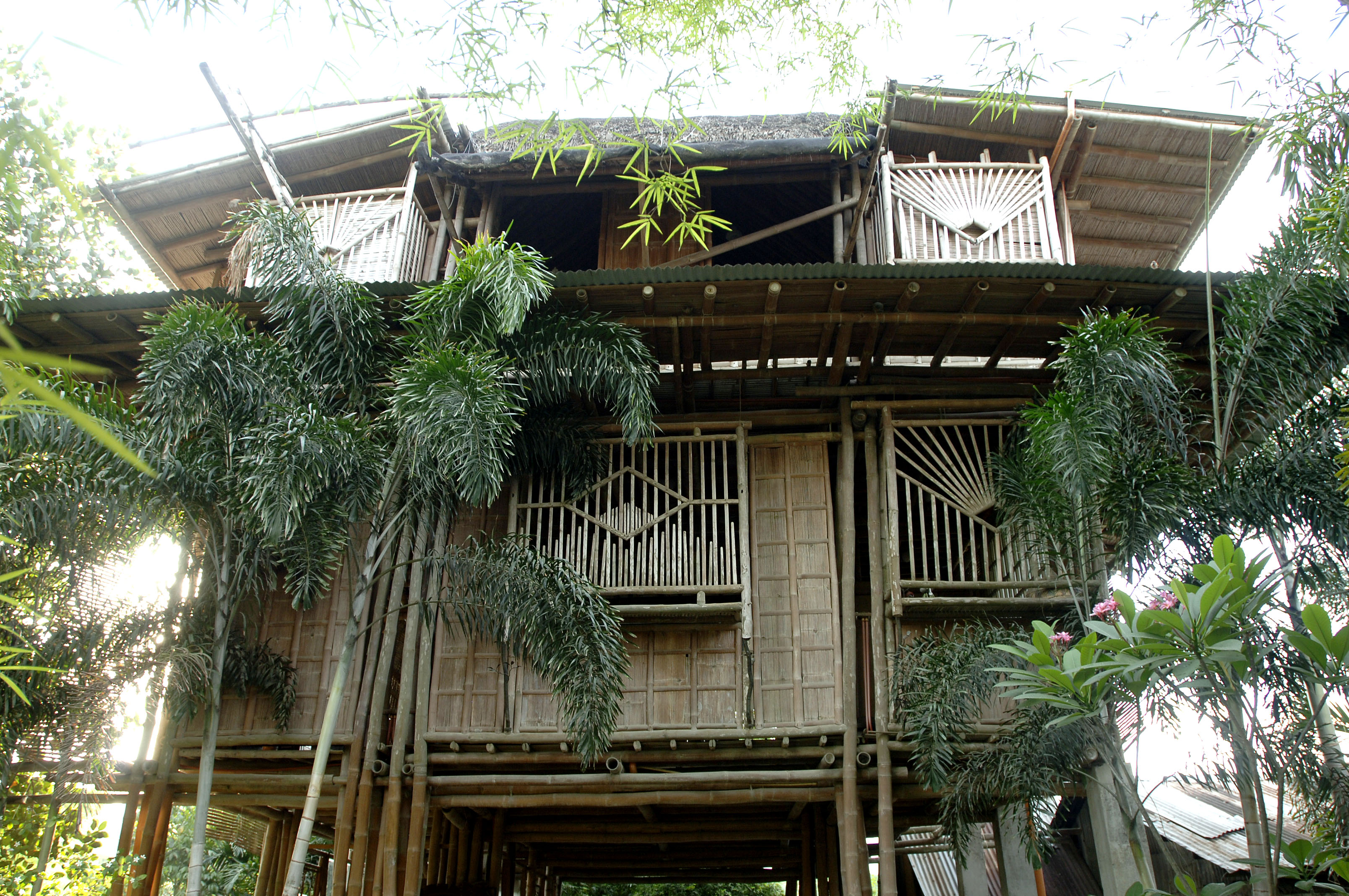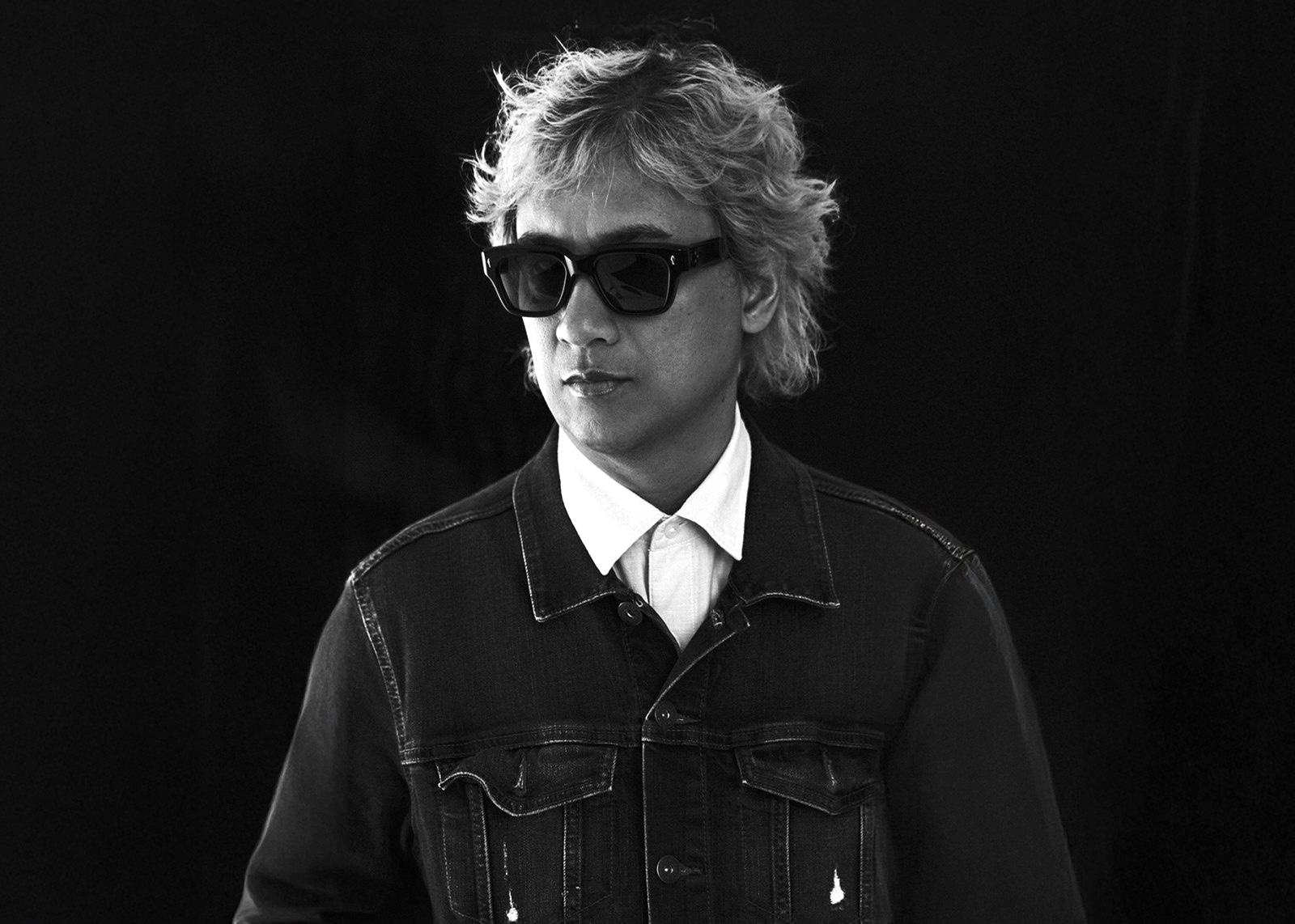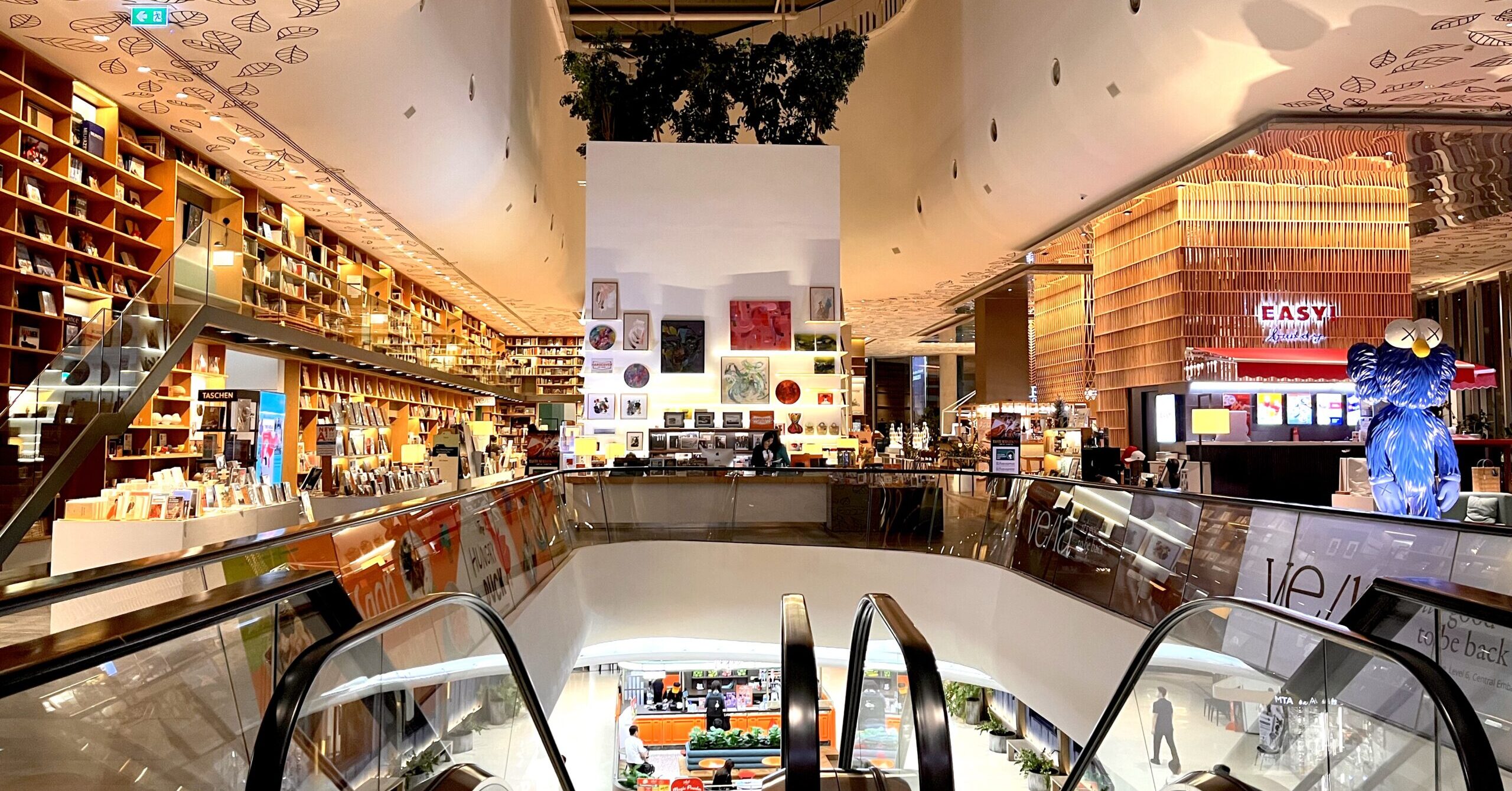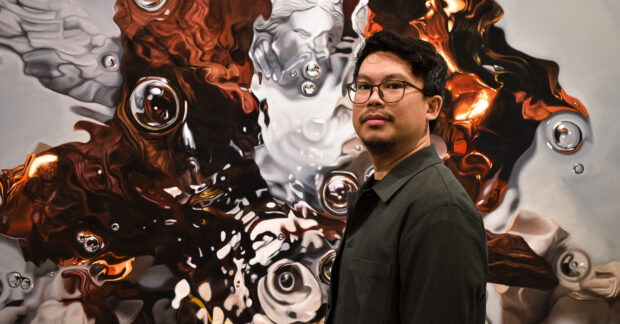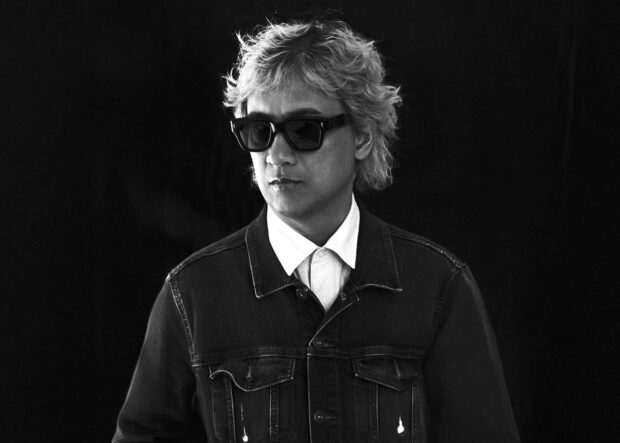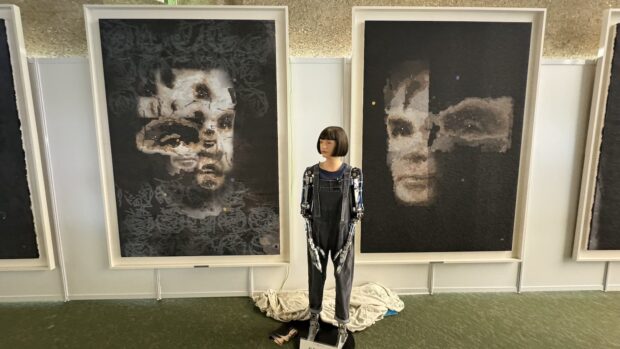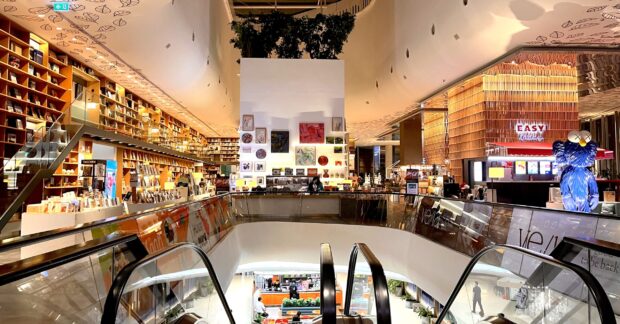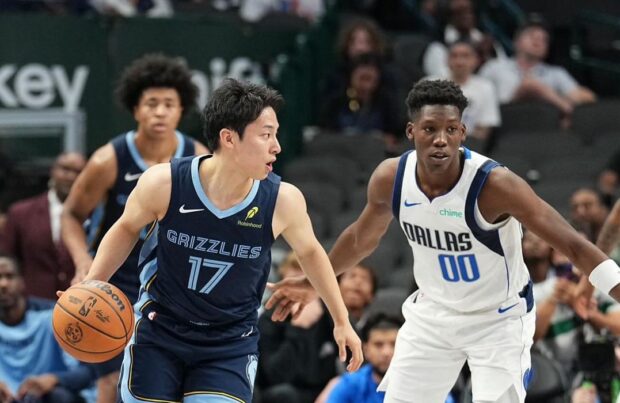The first thing you notice upon entering architect Rosario “Ning” Encarnacion-Tan’s three-story bamboo house is that it breathes.
Air and light pass freely through the wide open windows, the slatted floors, and the porous walls, bringing a sense of openness and limitless space, amplified by the expansive view of the San Mateo mountains surrounded by green rice fields just beyond the back fence.
And then, once you settle in, you feel that you are unusually relaxed. The stress and tension that is your normal state of being has, somehow, given way to a feeling of meditative calm.
It could be the feng shui, your chi harmonizing with the environment.
But if Tan were to be believed, it could also be the bamboo.
Somehow it stirs atavistic memories hardwired into our subconscious, handed down from generations of ancestors who lived much closer to nature than we do now, and at a much slower pace, in houses of bamboo.
“Living in a bamboo house encourages being rather than doing,” says Tan. “I always bring a lot of work home, but I end up not doing any of it. Visitors come intending to stay for an hour or two, and end up staying the whole day.”
Nowadays, “tropical” design is all the rage among local architects, but Tan has taken it to another level by expanding on the essential simplicity of the rustic bahay-kubo and pushing the limits of bamboo as a building material.
Described as “out-of-the-box” in Robert Powell’s recent book “Contemporary Houses in the Philippines,” Tan’s house is a continuously evolving work-in-progress, having served as an experimental research laboratory of sorts for the architect’s bamboo designs.
It is also both traditional, in the neo-
vernacular sense, and futuristic in that it presents a sustainable alternative to conventional building materials that is well ahead of the curve.
In this Tan is not alone: Forward-looking designers such as Simon Velez in Colombia, Vo Trong Nghia in Vietnam, and Elora Hardy in Bali have created stunning buildings using bamboo.
Tan summed up her design philosophy in a 2012 pamphlet, “100 Things about Building with Bamboo”:
“There are many practical reasons why I consider bamboo to be the ideal building material for a tropical house.
Strong
“Bamboo is strong: Its tensile strength equals that of steel, and its compressive strength exceeds that of concrete.
“Bamboo is flexible: The trunk can be used as columns, posts and beams. Halved, bamboo can be used to create doors, windows, shelves or counters. Cut into slats, it can be used as flooring. It can even be woven into matting for walls or ceilings.
“Bamboo is elegant: Properly selected, cut and treated, natural bamboo can be used to build a house that is both beautiful, comfortable and totally suited to our climate.
“Bamboo is sustainable. In our part of the world, several varieties of bamboo grow abundantly. It is readily available, affordable and best of all, environmentally friendly.
“But the main reason why I have chosen to walk the path of bamboo and devote my career as an architect to exploring its potential isn’t a practical one, but an intuitive one: Bamboo just feels right.”
Tan’s house has its beginnings in a 2003 exhibit at the Pinto Gallery called “The Bamboo Advantage,” which was intended to showcase neo-vernacular design. The Pinto Gallery’s owner, Dr. Joven Cuanang, asked the architect to design a fully functional showcase house as a major part of the exhibit.
“To justify the cost of the project, I designed a two-story bamboo house that could easily be dismantled and transported, for future use as someone’s home,” she recalls.
At the end of the exhibit in 2004, Tan—who had taken a break from her design practice to teach architecture at St. Mary’s University in Bayombong, Nueva Vizcaya—dismantled the house and reassembled it in Nueva Vizcaya to serve not only as her off-campus residence, but also as a teaching aid for her students.
“The house would become an ongoing project,” she recalls. “There was no hurry, or even need, to finish it, because there was always something new to learn by working on it, modifying it, expanding it. The house would be an organic living thing, always evolving. It wasn’t even tied down to one place. Like the bahay-kubo, it could be relocated with the help of a little bayanihan spirit—and, truthfully, a lot of effort, since it was after all a full-sized two-story house.”
When her teaching stint ended in 2007, the house was again packed up and trucked to its present location in San Mateo, Rizal, where its evolution continued.
A third story was added, giving a total floor area of 216 sq m. But because of the open layout, the house feels much larger than it actually is, the sense of spaciousness enhanced by the full-length “window” that opens from the living room into a spectacular mountain view.
To carry the added load, Tan designed structural posts using multiple poles of bamboo, with a cast concrete base.
“It’s actually the space in between the poles that give the posts strength,” she says. “The fascinating thing about bamboo is that it is the empty space that gives it strength. The bigger the hollow, the stronger the pole is.”
When hosting a party for 30 guests, she asked a structural engineer if the third floor could carry the added weight. The engineer told her it could easily hold up to 100 guests.
Building her house also allowed Tan to refine techniques that she has developed over decades of research, studying traditional houses and building methods.
One design goal was to use as much bamboo as possible, so apart from the concrete foundation and the roof of anahaw, and a few decorative details of wrought iron, the house is nearly all bamboo.
Instead of metal nails, which rust quickly in high humidity, she developed a system of using bamboo pegs and glue to hold members together. Larger members are joined using bolts, and lashed together with nylon fishing line.
Not for everyone
A bamboo house, Tan admits, may not be for everyone.
For one thing, while bamboo has been proven to be durable, it is also an organic material with a lifespan that requires maintenance and periodic renewal. The bamboo Tan uses has been chemically treated to resist insects, but moisture is also an enemy. Steps have to be taken to keep it dry during the rainy months.
There is also the prevailing mindset among homeowners that bamboo may be good for a vacation house or a second home, but not as one’s primary residence. This is reinforced by the building codes in some areas which don’t allow houses built entirely of bamboo.
Security is also a concern. Tan admits bamboo houses are not as lockable as conventional houses, which might limit their use in high-crime areas.
Bamboo also seems to impose its essential simplicity on the resident. It might be ideal for people who want their homes to be a quiet retreat from the noise of the world. Younger homeowners who want a more vibrant, urban lifestyle might want to look at other options.
“I’ve learned to simplify my lifestyle through living in a bamboo house,” says Tan.
Because storage is limited, she says she has learned to let go of possessions she doesn’t need. This is precisely the opposite of the aspirational middle-class dream house with all the modern conveniences that most people seem to want.
“It’s all good,” says Tan. “I understand now that it takes a leap of faith to accept bamboo wholeheartedly, and that not everyone is ready to take this step.”
She adds: “But the potential rewards are great, and I have no doubt that bamboo will continue to exert its subtle influence on homeowners who come into contact with it, and open themselves to its many possibilities.”

